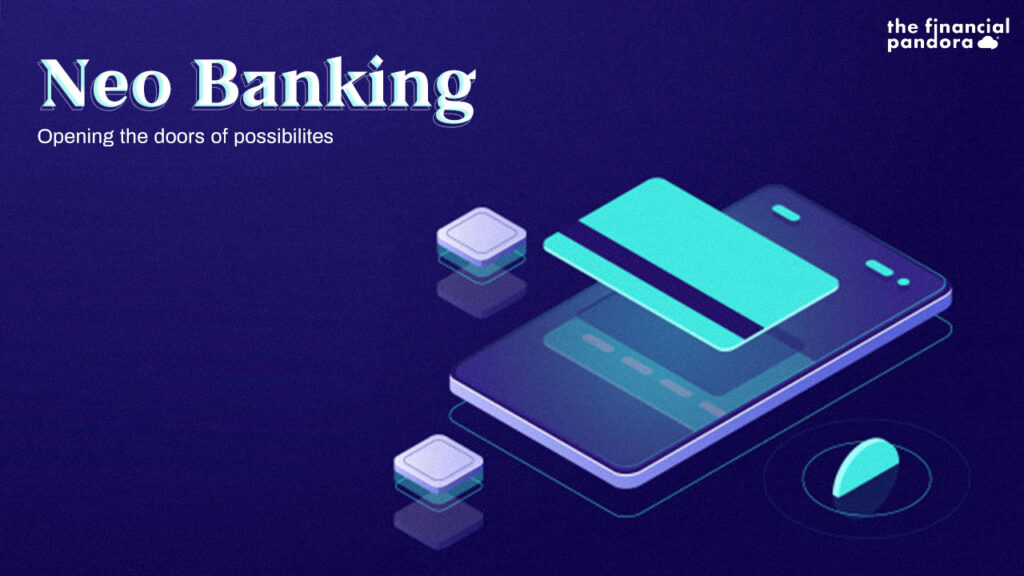It is said, that if one door closes, it often opens many others. Such is the case with Neo Banks. If it closes the doors of physical place of business (not completely though), it opens many more doors of possibilities through the digital offerings. Without much ado, lets understand this interesting and the fastest growing space in India called the Neo-Banks.
Understanding the Neo-Banks
Neo-banks offer banking products through digital mediums such as mobile and web-based applications. The fintech start-ups are the major enablers to Neo-banking; having partnered with Banks and other Financial institutions to provide digital solutions. These includes platforms for Personal loans (PayU & SmartCoin), Salary loans (FlexSalary & EarlySalary), Educational loans (Eduvanz & Grayquest), Gold loans (Golduno & Rupeek), etc., SME focused platforms (Capital Float, Lendingkart & Khatabook), Invoice Discounting (KredX & Finovate Capital), Core Banking Platforms (Ebix Cash & Recordent) and Financial inclusion focused platforms (Jai Kisan & Sub-K) amongst many others. These startups / platforms have peculiar internet-based products offering right from customer acquisition till the entire customer life cycle.
The concept gained prominence with the dawn of digital wave in Indian in last few years and the internet penetration – even in the rural India. So much so, that this space has seen the highest number of start-ups entering this space, money raised by them, the number of funding rounds, customers acquired by them and the value of business done by them.
Enablers to this New Concept
This new concept of neo banking brought about emergence of new models for doing the business. Many fintech start-ups focused on only one segment / product in their early days. However, they expanded into newer business areas to gain market share and scale their business. This gave rise to healthy competition amongst peers.
To start with, retail payments business gained significant importance post demonetization. The early entrant to the space gained significant market share; which is now more or less settled with PhonePay & GPay having more than 85% market share in terms of value of transactions carried out. Lately, the B2B payments segment has picked up its own pace with start-ups focused on POS and Payment Gateway scaling their businesses.
Now that these start-ups are established in their target segments, adding fresh segments becomes their next focus which mainly includes lending and other services. The next big wave that India is seeing is in the fintech start-ups focused towards Retail and MSME loans.
Newer products emerged as customer acquisition moved away from traditional B2B & B2C ways to B2B2C & B2B2B. For example, the industry saw offerings like Buy now pay later, 0% interest fees financing, students credit cards, online courses amongst many others. These products brought the desired scale at a very low cost. It even led to the credit off-take in areas where it was not required traditionally.
Lastly, technology being the biggest enabler, led to business growth and geographical expansion. Along with the expansion, tech enabled security checks like eKYC & instant CIBIL meant disbursements within a day. NACH – a web-based solutions to facilitate repetitive and periodic transactions has enabled timely repayments for lending Banks & NBFCs. RBI also revealed a framework to set up New Umbrella Entities (NUE) to ease retail payments.
Aligning the Strategies
Once the idea and concept gained ground amongst the masses, the only thing left was for the Banks and Financial institutions was to introduce broad policies and align the old policies with the new ones. This included re-structuring of the management – roping in managers with tech-based background, fresh recruitments in the areas of product development, technology and data science, changes in approach for performance evaluation of the employees and differentiated approach for customer acquisition and engagement.
Keeping innovation at heart, these banks identified the new opportunities, developed strategies and product offerings around them and embraced the technology to facilitate the same. These banks must keep an eye-out for acquisition opportunities to fuel its journey towards neo banking.
Though there may be many challenges – a shift from the traditional way of banking, ever changing customer needs and demands, technological advancements and upkeep with the same, emergence of business models and strong competition amongst the peers, regulatory compliances and hindrances, security threats, gaining scale and various means of customer acquisition, this space surely present a whole load of opportunities for Banks and fintech start-ups to focus and drive the next wave of growth.
With the industry expected to grow exponentially in next 2-3 years, its needs to be seen which of the institution triumphs to become a market leader in this emerging concept of Neo-Banking.
This post was written in collaboration with Asif Yahiya Sukri LLP. Asif Yahiya Sukri LLP provides unparalleled personalized financial services to a broad range of clients across different geographical locations. With a presence in the USA, India and the MENA region, they ensure that all of your financial decisions are made carefully and with your best interests in mind. They are innovators who understand what goes into building companies.
You can also reach out to them on info@aysasia.com
Follow Us @




